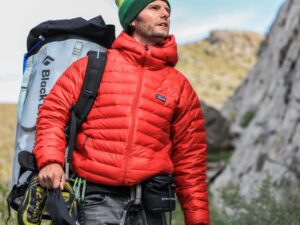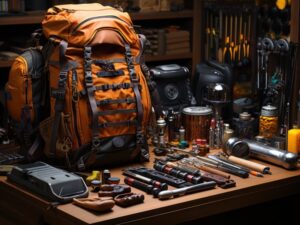In the dynamic world of retail, the outdoor gear trade stands as a cornerstone, offering a myriad of opportunities and challenges for distributors and retail stores alike. As purveyors of equipment and apparel designed to fuel adventures and explore the great outdoors, this sector is not just about selling products; it’s about fostering a lifestyle, connecting with nature, and embodying the spirit of adventure. For distributors and retailers, tapping into this market isn’t merely about stocking shelves; it’s about curating experiences, building relationships, and meeting the diverse needs of outdoor enthusiasts.
Get ready for a guide that’s tailored just for you—the distributor or retail store owner. In this blog post, we’re diving deep into the world of outdoor gear. We’ll give you practical advice and useful insights to help you thrive in this competitive industry. From understanding what your customers want to manage your inventory effectively, we’ve got you covered. So, let’s get started on this adventure together!
Understanding the Outdoor Gear Industry
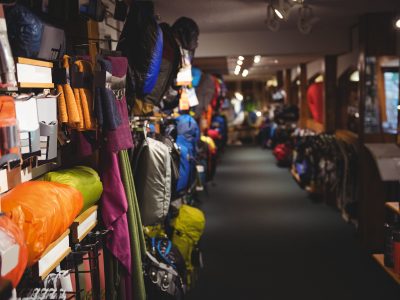
Outdoor Gear Market Size, Trends, and Growth Projections
As a distributor or retail store owner specializing in outdoor gear, it’s crucial to grasp the landscape of the industry in which you operate. The outdoor gear market is vast and dynamic, constantly evolving to meet the needs and desires of adventure enthusiasts worldwide.
With the rise of outdoor recreation as a lifestyle choice, the market size has seen significant growth in recent years. From hiking and camping to skiing and mountaineering, outdoor activities have become increasingly popular, driving the demand for quality gear.
Trends within the industry reflect a shift towards sustainability and innovation. Consumers are seeking eco-friendly products and technologies that minimize their environmental impact without compromising performance. As a result, manufacturers are investing in sustainable materials and production processes to meet these demands.
Growth projections for the outdoor gear market remain optimistic, fueled by factors such as increasing participation in outdoor activities, growing awareness of health and wellness benefits, and a desire for experiential travel.
Explanation of Key Players in the Industry
In this competitive landscape, it’s essential to recognize the key players shaping the outdoor gear industry. Manufacturers are the driving force behind product innovation, constantly pushing boundaries to create gear that meets the needs of outdoor enthusiasts.
Retailers play a crucial role in connecting consumers with the products they need, whether through brick-and-mortar stores or online platforms. Distributors and wholesalers act as intermediaries, facilitating the flow of goods from manufacturers to retailers, and ensuring a smooth supply chain.
Collaboration and partnerships among these players are vital for the success of the industry, fostering innovation, efficiency, and growth.
Popular Outdoor Gear Categories and Consumer Preferences
To effectively cater to your target market, it’s essential to understand the popular outdoor gear categories and consumer preferences driving purchasing decisions.
From apparel and footwear to equipment and accessories, outdoor enthusiasts have a wide range of needs and preferences. Understanding these preferences can help you curate your inventory to meet the demands of your customers, whether they’re avid hikers, campers, skiers, or climbers.
By staying informed about the latest trends and consumer preferences within each category, you can position your business for success in the competitive outdoor gear market.
Identifying Market Opportunities

Exploration of Niche Markets and Emerging Trends
As a distributor or retail store owner in the outdoor gear industry, staying ahead of emerging trends and tapping into niche markets can give you a competitive edge. Explore the latest developments in outdoor gear, from cutting-edge technologies to niche activities gaining traction among adventure enthusiasts.
Keep an eye on emerging trends such as sustainable and eco-friendly gear, minimalist outdoor lifestyles, or niche activities like overlanding and trail running. By identifying these trends early on, you can position your business to capitalize on growing consumer interest and stay ahead of the curve.
Identify Market Gaps
Understanding your target market is essential for identifying market gaps and opportunities. Analyze consumer demographics, preferences, and buying behaviors to pinpoint areas where demand exceeds supply or where specific needs are not being met.
For example, consider the preferences of different demographics such as millennials, Gen Z, or baby boomers, and how they influence purchasing decisions in the outdoor gear market. By tailoring your product offerings and marketing strategies to cater to these demographics, you can effectively tap into market opportunities and drive sales.
Capitalize on Market Trends
Now that you’ve explored niche markets, emerging trends, and consumer preferences, it’s time to discuss potential opportunities for retailers, distributors, and wholesalers to capitalize on these insights.
Whether it’s expanding your product range to include sustainable and eco-friendly gear, targeting specific demographic groups with tailored marketing campaigns, or partnering with manufacturers to develop innovative products, there are numerous ways to leverage market trends to grow your business.
Building Partnerships with Manufacturers

Establishing Strong Relationships with Outdoor Gear Manufacturers
As a distributor or retail store owner in the outdoor gear industry, forging strong partnerships with manufacturers is essential for success. These relationships not only ensure a reliable supply of high-quality products but also offer opportunities for collaboration, innovation, and mutual growth.
Establishing trust and open communication with manufacturers can lead to benefits such as preferential treatment, access to exclusive products, and insight into upcoming trends and developments. By cultivating strong relationships with manufacturers, you can position your business for long-term success in the competitive outdoor gear market.
How to Source High-Quality Outdoor Gear from Manufacturers
When sourcing outdoor gear products from manufacturers, it’s essential to employ effective strategies to ensure you’re getting the best quality products at competitive prices. Start by conducting thorough research to identify reputable manufacturers known for their quality and reliability.
Consider attending industry trade shows and networking events to connect with manufacturers and explore potential partnership opportunities. Additionally, leverage online platforms and directories to discover new manufacturers and expand your supplier network.
When evaluating potential manufacturing partners, prioritize factors such as product quality, production capacity, lead times, and reliability. Establish clear communication channels and establish mutually beneficial agreements to streamline the sourcing process and ensure a steady supply of high-quality outdoor gear products.
Tips for Negotiating with Manufacturers
Negotiating pricing, terms, and agreements with manufacturers requires careful consideration and strategic planning. Begin by understanding your own needs and priorities, as well as the manufacturer’s constraints and objectives.
Prepare thoroughly by researching market prices, analyzing production costs, and identifying areas where you can negotiate favorable terms. Be transparent and communicative throughout the negotiation process, clearly articulating your expectations and requirements.
Consider negotiating volume discounts, payment terms, exclusivity agreements, and warranty terms to maximize value for both parties. Be willing to compromise and find mutually beneficial solutions that align with the interests of both your business and the manufacturer.
Marketing and Promoting Outdoor Gear Products

Effective Marketing Strategies
In the competitive landscape of the outdoor gear industry, effective marketing strategies are essential for attracting customers and driving sales. From traditional advertising to digital marketing tactics, finding the right approach can make all the difference in reaching your target audience and achieving your business goals.
Consider strategies such as targeted advertising campaigns, strategic partnerships with influencers or outdoor enthusiasts, and participation in industry events and trade shows. These tactics can help increase brand visibility, generate leads, and ultimately drive conversions.
Digital Marketing Tactics
In today’s digital age, harnessing the power of online channels is crucial for reaching and engaging with your target audience. Social media platforms such as Instagram, Facebook, and Twitter offer opportunities to showcase your products, connect with customers, and build brand loyalty.
Email marketing is another effective tool for staying top-of-mind with customers and driving repeat business. By sending personalized and targeted email campaigns, you can nurture leads, promote new products, and offer exclusive deals and discounts.
Content marketing, including blogging, video content, and interactive guides, is another powerful way to engage with your audience and establish your brand as a trusted authority in the outdoor gear industry. By creating valuable and informative content that resonates with your target audience, you can attract organic traffic to your website and foster long-term relationships with customers.
Creating Engaging Posts to Attract Customers
When marketing outdoor gear products, compelling product descriptions, images, and videos can make all the difference in capturing the attention of potential customers and driving conversions.
Start by crafting clear and concise product descriptions that highlight the key features and benefits of your products. Use descriptive language and compelling storytelling to evoke emotions and inspire action.
When it comes to images, high-quality photography is essential for showcasing your products in the best light. Invest in professional product photography that accurately represents your products and captures the attention of potential customers.
Video content is another effective way to engage with your audience and demonstrate the value of your products. Consider creating product demonstration videos, how-to guides, or customer testimonials to showcase your products in action and build trust with your audience.
Providing Exceptional Customer Service

Delivering Exceptional Customer Service
In the competitive world of outdoor gear, delivering exceptional customer service is paramount. As a retailer, distributor, or wholesaler, your reputation hinges on the level of service you provide to your customers. Exceptional customer service not only fosters satisfaction and loyalty but also sets you apart from your competitors.
By providing personalized assistance, promptly addressing customer inquiries, and resolving issues with care and professionalism, you can ensure that every interaction with your customers leaves a positive impression. In an industry where trust and reliability are key, outstanding customer service can be the differentiator that keeps customers coming back time and time again.
Providing Personalized Assistance
To excel in customer service, it’s essential to develop strategies for providing personalized assistance, answering inquiries, and resolving issues efficiently. Invest in training programs to equip your staff with the skills and knowledge they need to assist customers effectively.
Utilize tools such as live chat support, email, and phone support to ensure timely responses to customer inquiries. Implement a robust system for handling customer feedback and complaints, and be proactive in addressing any issues that arise.
By demonstrating empathy, actively listening to customer concerns, and going above and beyond to meet their needs, you can create memorable experiences that foster customer loyalty and satisfaction.
Building Customer Loyalty
Building customer loyalty is essential for long-term success in the outdoor gear trade. Encourage repeat business and foster long-term relationships with outdoor enthusiasts by offering rewards programs, exclusive discounts, and personalized recommendations based on their past purchases.
Engage with your customers on social media and through email marketing to stay top-of-mind and nurture relationships over time. Solicit feedback and incorporate customer input into your product offerings and business practices to demonstrate that you value their opinions and prioritize their satisfaction.
Adapting to Industry Changes and Challenges
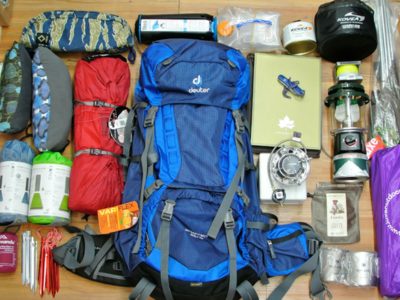
Common Challenges Faced by Retailers, Distributors, and Wholesalers
In the dynamic landscape of the outdoor gear trade, retailers, distributors, and wholesalers face a myriad of challenges that can impact their operations and bottom line. From changing consumer preferences to market disruptions and supply chain issues, staying ahead of the curve requires adaptability and resilience.
Common challenges include inventory management, maintaining competitive pricing, navigating regulatory compliance, and managing seasonal fluctuations in demand. Additionally, the rise of e-commerce and the proliferation of online marketplaces present both opportunities and challenges for traditional brick-and-mortar retailers.
Overcoming Challenges and Adapting to Industry Changes
To overcome these challenges and thrive in the outdoor gear trade, it’s essential to develop strategies for adaptation and resilience. Embrace technology and automation to streamline operations, improve inventory management, and enhance the customer experience.
Stay agile and responsive to changes in consumer preferences and market trends by continuously monitoring industry developments and adjusting your product offerings and marketing strategies accordingly. Cultivate strategic partnerships with suppliers, manufacturers, and other stakeholders to mitigate supply chain risks and capitalize on emerging opportunities.
Staying Informed About Trends, Regulations, and Best Practices
In an industry as dynamic and competitive as the outdoor gear trade, staying informed about industry trends, regulations, and best practices is essential for success. Subscribe to industry publications, attend trade shows and conferences, and network with industry peers to stay abreast of the latest developments and innovations.
Monitor regulatory changes and compliance requirements to ensure that your business operates ethically and by relevant laws and regulations. Embrace a culture of continuous learning and improvement, and encourage your team to stay curious and open-minded about new ideas and approaches.
Conclusion
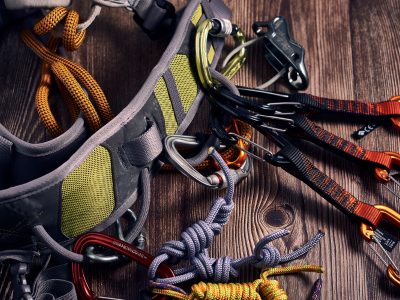
Despite the challenges and uncertainties that come with operating in the outdoor gear industry, it’s essential to remain optimistic and proactive. By leveraging emerging trends, identifying market opportunities, and adapting to industry changes, you can position your business for long-term success and growth. Remember that every challenge presents an opportunity for innovation and improvement, so embrace the journey and keep striving for excellence.
As you continue your journey in the outdoor gear trade, we encourage you to get in touch with us. Together, we can collaborate, innovate, and shape the future of the outdoor gear trade.


